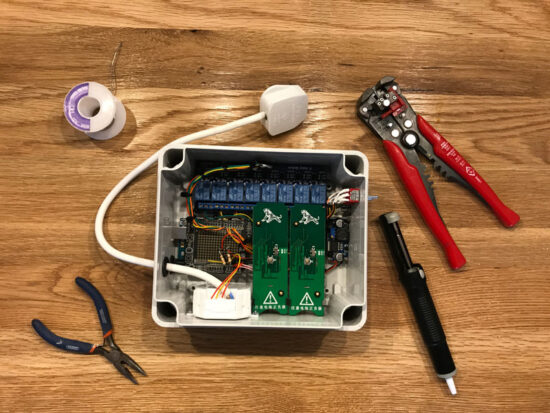
14th December 2015 by Pambos Palas
How to Brew the Perfect Cup of Tea
If you are a true tea lover, or English, then you are certainly very particular and have your own specific rules when it comes to making a cup of tea. You might even cringe or scoff at anyone who might have deviated from the only correct way of making tea, and did something outrageous like poured the milk first! If this is the case, then please try not to be offended by what follows… It is simply a list of useful tips and advice for you to take or leave based on my experience and the recommendations of others. I’ve compiled it in the hope that it might, in some small way, help to improve the tea brewing experience of anyone reading this.
-
Keep your tea sealed.
Especially in a kitchen environment, the tea would likely absorb some moisture or food smells over time. Ensure it is properly sealed to avoid compromise!
-
One teaspoon of tea per cup of water.
This is not set in stone, you may want to add a further spoon if you prefer your tea stronger. A good way of measuring the water content can be to pour boiling water into however many teacups you want, and then transfer that into the teapot – this allows for accurate measurement, but also has the desirable side-effect of cooling the water slightly so that its closer to the desirable level.
-
Do NOT re-boil the water.
Ideally the water should be freshly filtered and should be boiled the ONE time. If you finished a cup and want another one, don’t be lazy and reheat the water. The reasoning for this is that by boiling water the oxygen content will diminish due to degasification (see a previous post here that explains how this happens if you are interested). Tea needs oxygen, as it allows for the flavor to be developed – without it, it would feel a little flat.
(Marcin, if you are reading this take note!) -
Allow room for leaf expansion.
Ball strainers, whilst often quite convenient, don’t allow much room for the leaves to expand.
-
Do not leave the teabag/leaves in the cup/pot.
Once the tea has had the chance to infuse, and the ideal time has been reached, either remove the leaves or strain the tea and transfer it to another pre-heated teapot.
-
Get the temperature right.
Different teas react differently to water temperature. In all cases, the water shouldn’t be over-boiled, and ideally it should be stopped before reaching a full boil. A temperature controlled kettle, such as this is actually ideal, as you can choose the temperature that you want depending on the type of tea. Generally the following temperatures are ideal:
– Green teas: 70-75 °C
– White teas: 70-75 °C
– Black teas and Oolong: 85 °C
– Rooibos and Herbal teas: 100 °C -
Get the timing right!
Just like with temperature this varies for different types of teas. Whilst this is often a matter of preference, some of the timing suggested here should be respected to avoid some teas becoming too strong or even bitter. Why not get an awesome tea timer to help you?
– Green teas: 2-3 minutes
– White teas: 4-5 minutes
– Black teas: 3-5 minutes
– Oolong: 2-3 minutes
– Rooibos and Herbal teas: 4-6 minutes -
Get a nice tea pot.
Why? Because it’s awesome! It will make the process much more ceremonious. Porcelain is a great material for this, but there are some great glass ones too that are more aesthetically pleasing.
-
Get a nice tea cup.
Why? Again… because it’s awesome! There are some great designs out there.. some things to look out for might be good insulation. A double walled glass has the advantage of very good heat isolation so that you don’t get burned holding the glass, but also keeping the tea warm for longer.
That’s it for now, and remember, if you are lazy, you can always turn to technology for help! This device seems to cover many of the above tips when it comes to timing and temperature. The only downside (aside from the price tag) is that it takes away from the ceremony!




